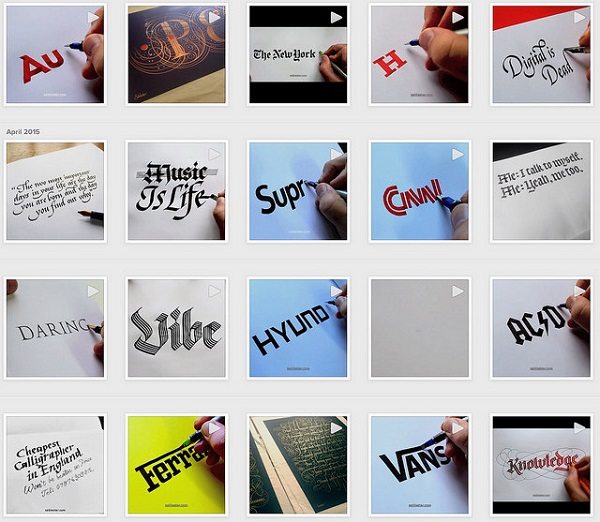
June 18, 2015; BBC News
Who said cursive and calligraphy were on their way out? Not the Internet. Calligraphy has become somewhat of an online phenomenon, capturing the attention of global Instagram and Tumblr users. But it’s not images of calligraphy on paper that are hypnotizing viewers. It’s video of artists like Seb Lester, creating the calligraphy.
Lester, who is from London and has been trained in graphic design, according to his website, is one of the Internet-famous calligraphers (he’s been called the “Banksy” of calligraphy, in reference to the elusive, British street artist) who has found a captive community online, so much so that he creates videos of himself drawing calligraphy for them. The Internet may be onto something—see him mimicking well-known logos in this video:
Hand Drawn Logos from Seb Lester on Vimeo.
Sign up for our free newsletters
Subscribe to NPQ's newsletters to have our top stories delivered directly to your inbox.
By signing up, you agree to our privacy policy and terms of use, and to receive messages from NPQ and our partners.
“I really love the fact that calligraphy translates so well to the Internet. You’re taking something ancient and, using modern technology, presenting it in a very Internet-friendly way.”
With over a million followers on social media, Lester has found an audience for what would seem a forgotten craft in a way that could not have been accomplished several years ago.
“[The viewers] really like seeing videos over just seeing a finished picture, because they can see how you use the pen, how you hold the pen,” Ian Barnard, another well-known calligrapher and designer, said to BBC.
Like Lester, Barnard has also found success on Instagram, where his followers can comment on his pictures and videos to directly interact with him as an artist. Both artists also sell their artworks to the public as well.
Unlike years past, the rise of texting and emailing leave little need to teach cursive or calligraphy in school. But Lester, Barnard, and other calligraphers have found an avenue to bring the appeal of this old, lost art to a new generation. While handwriting used to be the normative form of communication, now it inspires an intimacy texting will always lack. For those of us who remember our school lessons in cursive, these videos may be a welcome blast from a past that is here to stay.—Shafaq Hasan













